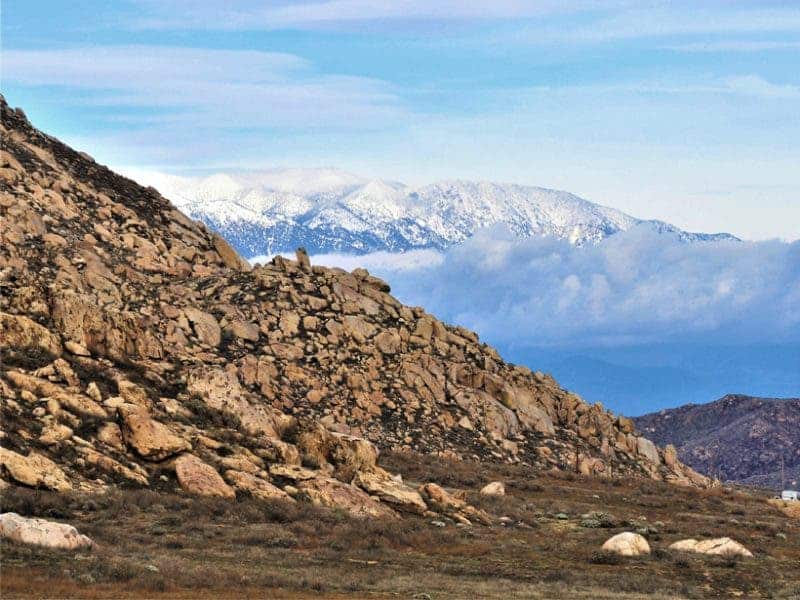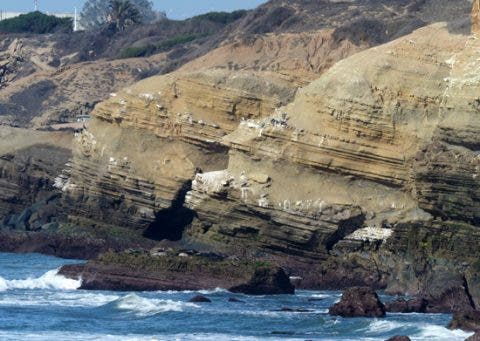
Through subtle shifts and tugs across the planet, activity on Earth perpetually works to balance the global thermostat—from leaves sucking carbon dioxide out of the atmosphere to polar ice reflecting the Sun’s rays back into space. Now, scientists have dug deeper into another source of long-term climate equilibrium: the formation of volcanic mountain ranges.
The team, based at Rice University in Houston, homed in on plutons along the edges of continents. These continental volcanic arcs rise up where oceanic crust sinks and melts beneath continental crust, as in the Andes and North American Cascades.
These mountains initially warm the climate by spewing greenhouse gases from the melted seafloor into the atmosphere as they form. Researchers have long focused on this effect and have generally viewed these continental arcs as net sources of global warmth. But now, new findings suggest these mountain ranges actually counterbalance their warming over geologic time by exposing fresh rock that easily binds with carbon dioxide in rainwater, ultimately shuttling that carbon out of the atmosphere and into the seafloor. The team published their findings in Earth and Planetary Science Letters.
“If you have a global flare-up of these arcs, you could help drive greenhouse conditions,” said Cin-Ty Lee, a geologist at Rice University and contributing author on the paper. “But as soon as [the arcs] die, you should be immediately followed by more enhanced cooling.”
The combination of freshly exposed, reactive rock and steep relief expedites the mineral breakdown and erosion that leads to this cooling. The minerals within these particular types of mountains, which tend to be fairly rich in the elements magnesium and calcium, also make them ripe for weathering because those particular elements react easily with carbon dioxide in rainwater to form stable carbonate minerals like limestone.
Aside from weathering, erosion of these high-relief coastal mountains also buries organic material on the seafloor, sealing off even more carbon from the atmosphere.
These concepts aren’t new. But, until now, researchers hadn’t known the extent to which continental arcs might negate their warming through weathering and erosion.
Measuring the Sink

To sleuth out these dynamics, Lee and his graduate student, Hehe Jiang, studied the chemistry of an ancient arc that was active between 170 million and 85 million years ago along the coast of Southern California, within what is now the Peninsular Ranges. They measured the amount of calcium in both the original plutonic rock and the sediments that eroded from those rocks toward the coast. A loss of calcium in the eroded sediments should signify a breakdown through weathering, so they calculated weathering rates by measuring that calcium loss.
They found that weathering did, indeed, dissolve a large mass of the eroded material—by up to about 50% in some places. From these calculations, they estimated that weathering rates would have negated any warming from volcanic activity over the course of about 40 million to 50 million years.
“I think that was a pretty big finding,” said Clement Bataille, a geochemist at the University of Ottawa who studies weathering processes but wasn’t involved in this study.
Over time, the relief of the mountains dropped, and erosion and weathering rates dropped as well. But those mountains still pull carbon dioxide out of the atmosphere today, thanks, in part, to subsequent tectonic activity that lifted them back up.
Digging Deep in Continental Arcs
In fact, all mountains have the potential to weather and cool the planet in this way. But some do so more vigorously than others depending on their composition, shape, and location.
Volcanic islands, for example, tend to weather more readily than continental arcs because they tend to contain more reactive minerals.
“When we think of volcanic weathering, people always think about island arcs,” said Benjamin Mills, a biogeochemist at the University of Leeds in the United Kingdom who studies past and present climate changes. That’s one reason why continental arcs haven’t received as much attention as potential carbon sinks as island arcs have, he explained.
.But continental arcs tend to span far wider areas than island arcs, so they can contain more weatherable and erodible material. “It’s something we haven’t thought about as much as we should,” Mills said.
Weathering also requires rainwater or other forms of precipitation. So especially dry land features, like the Tibetan Plateau, aren’t as effective at cooling the climate as wetter mountain ranges like the Andes, Lee explained.
A recent Nature paper suggests Earth today has more reactive, weatherable material than in the recent geologic past. If that’s the case, mountains across the planet could help the climate bounce back from anthropogenic warming over the course of geologic time, said Bataille. “Maybe the Earth will recover much faster than in the past.”
By Laura Poppick (@laurapoppick), Freelance Science Journalist. This article was originally published on the Eos website.


